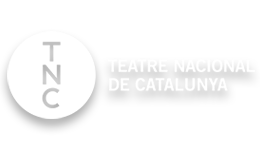IT Solutions
SMART MEDIA MANAGEMENT
WE'RE LEADING THE MANAGEMENT AND DISTRIBUTION OF CONTENT, TRANSFORMING INFORMATION INTO STRATEGIC VALUE
Clients placing their trust in us






10 years of Ebantic experience
EBANTIC IS AN ACTIVE PART OF AN INNOVATIVE DIGITAL ECOSYSTEM
We are specialists in offering solutions based on Open Source technologies and fully customized SaaS models, with the aim of optimizing processes for all production sectors
Our main commitment is offer cutting edge technological solutions, adapted to the specific needs of each client.
We actively participate in an innovative digital ecosystem with the main institutional bodies in the field (Digital Cluster, Audiovisual Cluster of Catalonia, and Innovative SME from the Spanish Government's Ministry of Science and Innovation).
Industrial software development services.
integration of OTT platforms.
technology consulting.
innovative solutions in areas such as artificial intelligence.


"The company is committed to offering solutions, contributing to the success of its customers in an increasingly competitive and digitalized environment."
Carles Rams, CEO of EbanticFour Business Lines
Technological excellence in a digital world in constant evolution
Ebantic diversifies its offering to meet the specific needs of their customers in several key areas:
Optimize your processes
From software development to automation systems, we transform operating flows to increase efficiency and reduce costs.
Connect with your audiences
Dedicated to media platform integration, facilitating the efficient management of audiovisual content and ensuring agile workflows.
We support your digitization
Digitization and adoption of artificial intelligence, always with a strategic approach that ensures the long-term success of our clients.
The place for innovation
Focusing on emerging areas such as artificial intelligence and the design of inclusive tools to ensure accessibility and sustainability.
IT Solutions
Cutting-EDGE content management for industry-specific service
Ebantic offers advanced IT solutions, such as MuseumOTT, TeleOTT, TvNews, and CareOTT, designed to optimize content management in sectors including museums, television, news, and healthcare.
Case studies
OUR CUSTOMERS TRUST US WITH THEIR PROJECTS
More that 1.2 million Media Assets reflect our experience in the sector.
Hub Technology
FROM BARCELONA TO THE WORLD
In the heart of Barcelona, ONE OF THE MOST DYNAMIC TECHNOLOGY HUBS IN EUROPE, WE SUPPORT INNOVATION AND DEVELOPMENT IN THE CITY'S IT SECTOR, A VIBRANT, GLOBALLY-CONNECTED ECOSYSTEM IDEAL FOR PROJECTING THE FUTURE OF TECHNOLOGY.
FAQs
Frequently Asked IT questions
An OTT (Over-The-Top) is a platform that offers audio-visual content, such as series, movies and live streams, via the internet, without the need of intermediaries such as cable operators or satellite. Users access the content through applications on connected devices, like smart tvs, smartphones or tablets. Common examples include Netflix, Disney+ and Spotify.
A SaaS solution (Software as a Service) is a software delivery model were users access to applications hosted in the cloud via the internet, generally by subscription. These solutions eliminate the need for installing and maintaining software on the local device. Common examples include tools such as Google Workspace, Salesforce and Dropbox.
SaaS solutions (Software as a Service) offers several advantages:
- Access from anywhere: Being hosted in the cloud, allows users to access the software from any device with an internet connection.
- Automatic updates:Improvements and updates are implemented automatically, without the need for user intervention.
- Cost reduction: avoids the need for initial investments in infrastructure, such as servers, which then reduces maintenance costs.
- Scalability: Facilitates the enlargement or reduction of resources according to the needs of the business, paying only for what you use.
- Enhanced collaboration: Offers real-time tools that enable collaboration between teams in different locations.
- Security and support: the SaaS business model typically includes advanced security measures and automatic backups.
These advantages make SaaS solutions flexible and efficient for businesses of all sizes.
Alexa offers several accessibility tools for people with disabilities to easily interact with devices enabled with Alexa. Some of these tools include:
Response text: Alexa may provide answers in text through compatible devices with screens like the Echo Show.
Simplified Voice commands: allows for complex actions with simple voice commands, ideal. for people with reduced mobility.
Compatibility with screen readers: Devices with supported screens, such as Echo Show, work with screen readers for people with visual disabilities.
Subtitle display: Offers subtitles for answers and transcripts on devices with a screen.
Change the voice speed: Users can adjust the speed at which Alexa speaks, making it faster or slower, depending on their needs.
Integration with support devices: Alexa is compatible with devices for home automation such as lights and smart locks, facilitating the control for people with reduced mobility.
A CDN (Content Delivery Network) is a network of geographically distributed servers that work together to deliver digital content (such as web pages, videos, images, and other resources) more quickly and efficiently to users.
Main features:
Geographical distribution: The servers are located in different regions to reduce the distance between the user and the server that delivers the content.
Reduction of latency: By using the server closest to the user, there is better loading speed
Scalability: Supports large traffic volume without saturating the main servers.
Better performance: Helps decrease loading times and optimizes the user experience.
Enhanced security: Protects against attacks such as DDoS by distributing the load between.multiple servers.
In summary, a CDN is the key to improving the speed, security and reliability of online services.
A solution Cloud (in the cloud) is a technological service that uses resources located on remote servers accessible through the internet instead of relying on local infrastructure. These solutions allow businesses and users to store, process and access to data, applications and services from anywhere with an internet connection.
Main features:
Scalability: You can adjust the resources (storage, processing capacity, etc) according to the needs of the user.
Remote access: The services are available from any internet-connected device.
Cost reduction: Eliminates the need to invest in physical hardware and reduces maintenance costs.
Security: Cloud service companies typically offer advanced data protection measures, such as encryption, and automatic backups.
Real-time collaboration: Makes it easier to work in a team by allowing multiple users to access and modify data simultaneously.
Open Source Technology (open source code) refers to software, hardware, or projects whose source code is publicly available and can be used, modified and distributed freely by any person, under the terms of an open source license.
Main features:
Access to the source code- Users can view, modify and customize the code according to their needs.
Community collaboration: Developers around the world work together to improve and update the project.
Open licenses: The software is regulated by licenses (such as MIT, Apache or GPL) which guarantees its use and free redistribution of the software.
Transparency: Anyone can inspect the code to verify its security, reliability, and functionality.
Economy and flexibility: It is free or much cheaper than proprietary solutions, with the freedom to adapt it.
The KPIs (Key Performance Indicators) are metrics that are used to measure the performance of a company, project or initiative with regard to their strategic objectives. KPIs help you to determine if you are meeting the pre-established goals and provide key information for decisions making. They can be both quantitative (such as income, number of sales) and qualitative (such as customer satisfaction).
For example:
In sales, a KPI could be "number of sales made in a month".
In marketing, it could be "conversion rate of visitors to customers."
KPIs are specific, measurable, achievable, relevant and timed (following the SMART model).
Technology Enterprise Service Bus (ESB) it is a software architecture that facilitates the communication between applications and systems within an organization, allowing for the integration of various applications and services efficiently. The ESB acts as an intermediary, or "bus" that connects and coordinates the exchange of information between different systems and services, regardless of their platforms, technologies, or underlying protocols.
Some of the main features of an ESB include:
Uncoupling: The systems that are communicating through the ESB do not need to know specific details about other systems. This reduces the dependency between applications and facilitates the management and maintenance.
Interoperability: An ESB can integrate heterogeneous systems, using different programming languages, technologies and protocols (e.g., SOAP, REST, JMS, etc).
Scalability: The architecture allows for the easy addition of new services and applications without impacting the system as a whole.
Data transformation: The ESB can transform data from one format to another format to ensure compatibility between applications with different data structures.
Orchestration of services:- Allows the integration and coordination of multiple services to achieve workflows are more complex.
Security: The ESB can incorporate security features, such as authentication, authorization, and encryption to secure communications between services.
Last Article
Discover our blog posts
The latest trends and news in the IT sector in our blog to be always a step ahead.









